The 10 best DC Comics of all time
Batman: Year One, DC: New Frontier, and a couple (possible) surprises!
For more than 80 years, DC — formerly DC Comics, and before that, National Comics Publications — has been one of the leading publishers in the comic book industry, leading the way in terms of innovation whether that means creating new characters, concepts or even genres, or helping comic book fandom become what it is today.
DC is the birthplace of the superhero, sure, but also the company that published the Vertigo imprint for more than 25 years, with The Sandman and Fables continuing to be part of its output today; even before that, it had a long history of romance, western, and war comics. It’s the company that gave the world Watchmen and Batman: The Dark Knight Returns within a year of each other, permanently changing the superhero genre in the mid-80s, and then followed it up with George Pérez’s Wonder Woman, John Byrne’s Superman, and the Giffen/DeMatteis Justice League International era. While the company is considered by some fans to be the also-ran beside its biggest competitor Marvel, the truth is that DC has consistently been at the forefront of pushing comics forward, and putting out some damn fine work in the process.
With that in mind, it’s difficult to pick the ten best comics from DC’s lengthy history — but that doesn’t mean that we didn’t try. Read on, keep reminding yourself that your own opinions are perfectly valid even though these are objectively the best ten, and prepare to revisit some of the finest comics ever published.
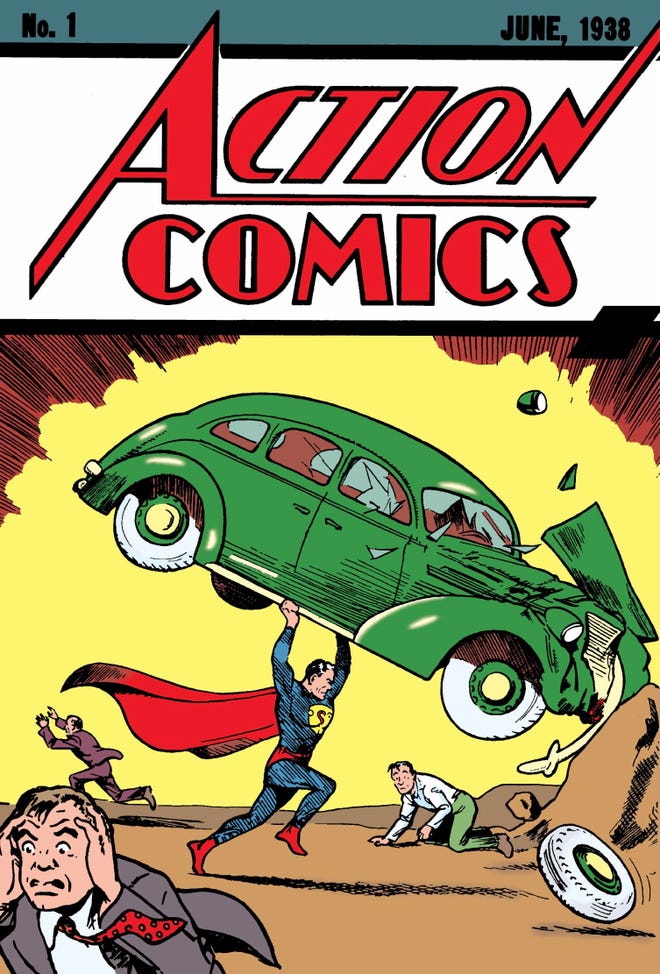
10. 'Superman' (Action Comics #1)
By Jerry Siegel and Joe Shuster
It’s undeniable that the very first superhero story lacks the polish that other stories on this list display, but there’s no small amount of charm to be found in the debut of the Man of Steel: the story moves with undeniable urgency, with a hero both dedicated to moral justice and thrillingly impatient with the legalities involved in doing so. Shuster’s art is filled with tension, adding to the excitement. This is where it all started, and to this day, it’s a story filled with almost limitless potential.
9. 'Death Flies the Haunted Sky!' (Detective Comics #442)
By Archie Goodwin, and Alex Toth
With no disrespect to Goodwin’s writing, the power of this story comes almost entirely from letting Alex Toth – one of the finest artists to ever work in comics – do his stuff almost entirely unencumbered. The result is a masterclass in comics storytelling and artistic verve that doubles, thankfully for those who have no interest in the medium beyond the surface level, as one of the finest Batman comics to ever see print.
8. 'The Return of Barry Allen' (The Flash #74-79)
By Mark Waid, Greg LaRocque, and Roy Richardson
Decades before Barry Allen properly returned from the grave, this breakneck storyline suggested that he had, but also that he’d also come back… wrong. I won’t give away the twist – it’s too good to spoil, even decades later – but this is a smart, fast-moving story that has a lot to say about the Flash legacy, superhero comic cliches, and how to write your way around predetermined events while wrongfooting the reader. Above all, it’s also just a fun read.
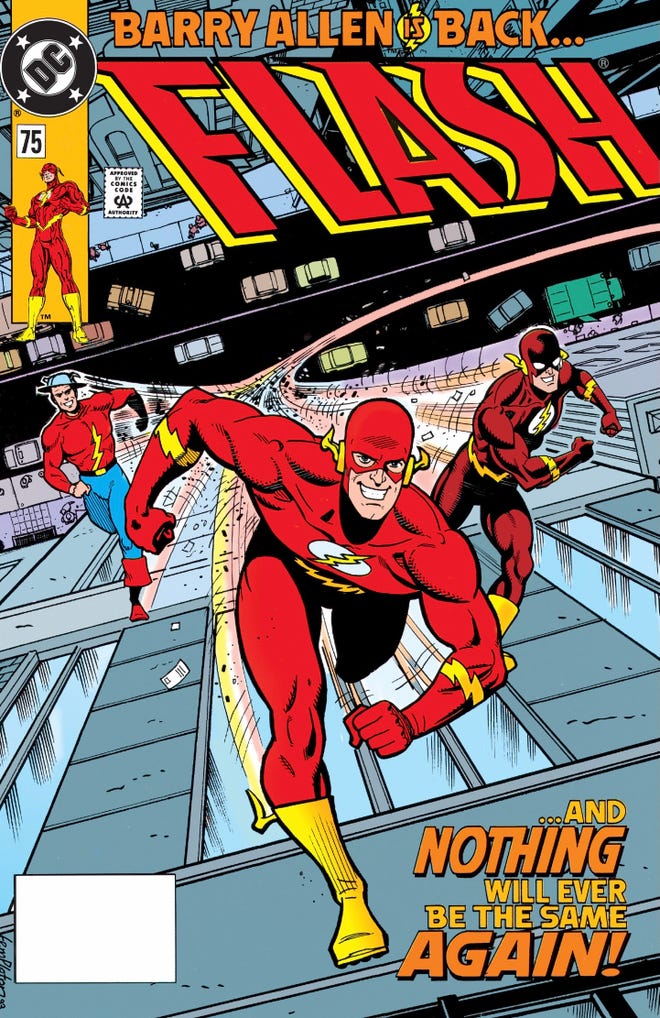
7. 'Crisis on Infinite Earths' (Crisis on Infinite Earths #1-12)
By Marv Wolfman, George Pérez, Dick Giordano, and Jerry Ordway
As the tagline for the series put it, worlds lived, worlds died, and the DC universe was never the same. Wolfman and Pérez made all of it seem effortless, with each successive issue raising the stakes and upending expectations. If Action Comics #1 started everything as far as superheroes go, Crisis on Infinite Earths was the start of the event comic as modern audiences know it today – and it’s still unmatched in terms of ambition and impact. To this day, this is what all other events wish they could live up to.
6. 'Brother Eye and Buddy Blank' (OMAC #1)
By Jack Kirby, and Mike Royer
Featuring amazing concepts seemingly offered up with little effort – the Global Peace Agency! Build-A-Friend! – and with the ultimate 'revenge of the nerd' office fantasy at its core, the first issue of OMAC is perhaps one of the best one-issue science fiction stories the medium has seen, introducing the 'world that’s coming' – an impressively prescient world filled with the kind of things that something like Black Mirror would work hard to evoke decades later.
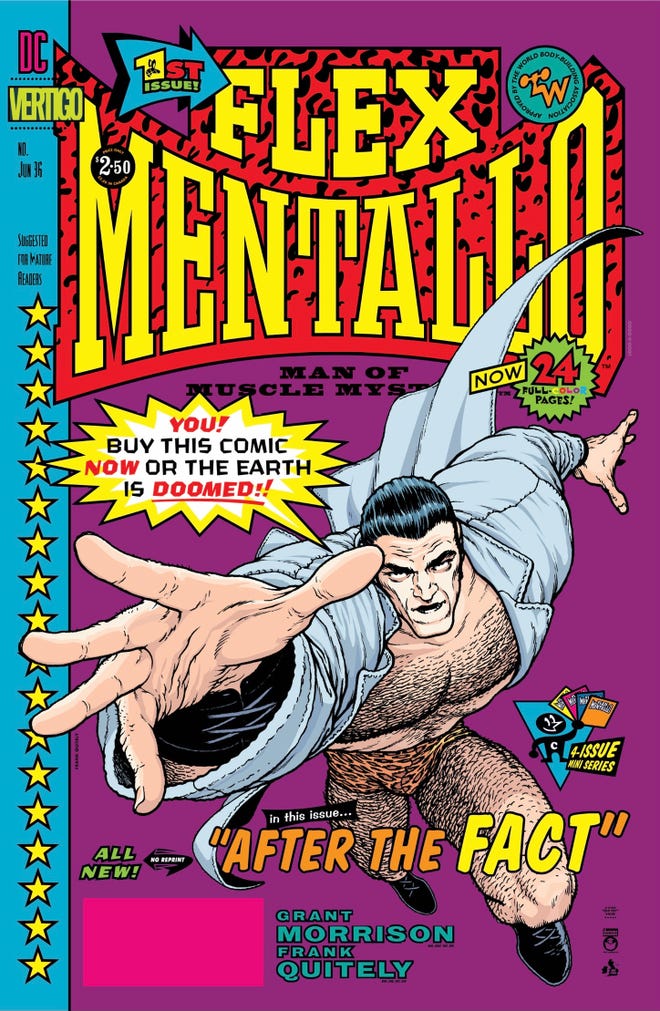
5. 'Flex Mentallo: Man of Muscle Mystery' (Flex Mentallo #1-4)
By Grant Morrison, and Frank Quitely
Part-autobiography, part-history of the superhero genre in comics, Flex Mentallo is a love letter to the creators’ own youths as much as one to the tights-and-capes set. Morrison pours their heart into this series, even as they build an elaborate, metatextual structure to keep it safe. Quitely, meanwhile, spends his U.S. debut proving that he has always been a force to reckoned with, building multiple worlds at the same time, each as real as the other.
4. 'The Flash of Two Worlds' (The Flash #123)
By Gardner Fox, Carmine Infantino, and Joe Giella
Nonchalantly inventing the multiverse as it’s currently known in everything from Avengers Forever through Everything Everywhere All At Once, 'The Flash of Two Worlds' is a masterpiece of storytelling economy: massive concepts are explained with exquisite focus and precision, leaving room for beautifully weird additions – thoughts can slip between worlds in the form of comic books – and, of course, a team-up between superheroes in order to save the day.
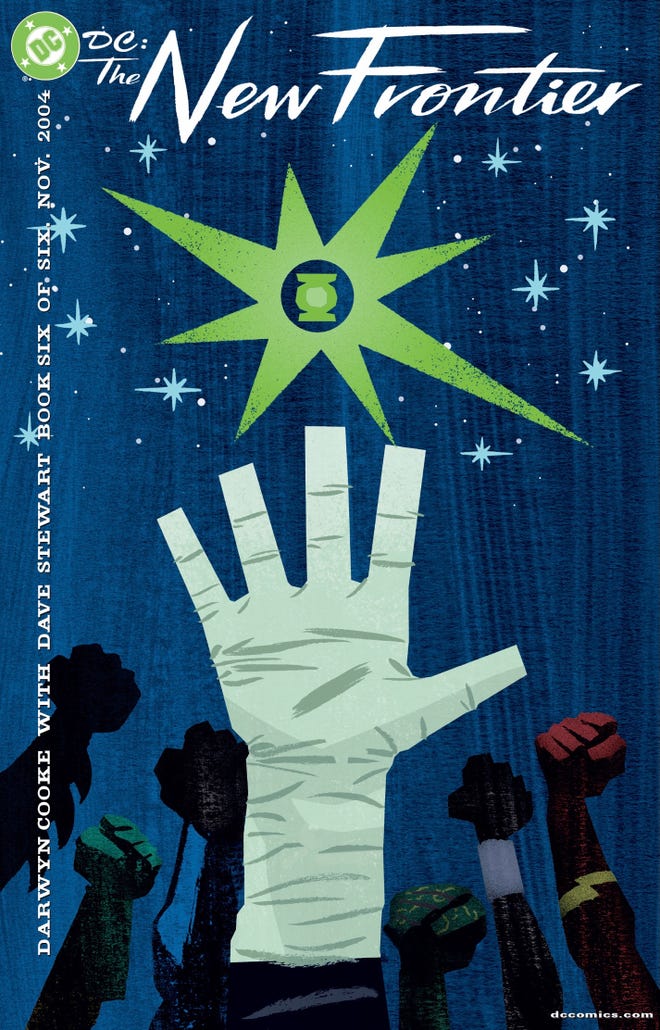
3. 'DC: The New Frontier' (DC: The New Frontier #1-6)
By Darwyn Cooke
Nothing less than an attempt to recontextualize DC’s Silver Age concepts and characters by retelling a new origin of the Justice League placed firmly alongside the social, political, and cultural touchstones of the era in which they were created, New Frontier should be overbearing and dry – instead, thanks to Cooke’s light touch, vast talent, and impeccable taste, it’s a ring-a-ding joy from start to end, filled with the same swagger and optimism that made Hal Jordan Green Lantern in the first place.
2. 'Batman: Year One' (Batman #404-408)
By Frank Miller, and David Mazzucchelli
Fresh from giving Marvel’s Daredevil his ultimate challenge, Miller and Mazzucchelli turned their attentions to Bruce Wayne’s origin story, mixing in the grittiness of New York in the '70s and letting Mazzucchelli’s peerless artwork do the heavy lifting, accompanied by Richmond Lewis’ colors. What they’ve created works whether or not the reader has any interest in the Dark Knight, with Miller’s staccato narration and the muted, near-chiaroscuro visuals creating something that as much a tone poem as it is a superhero story.
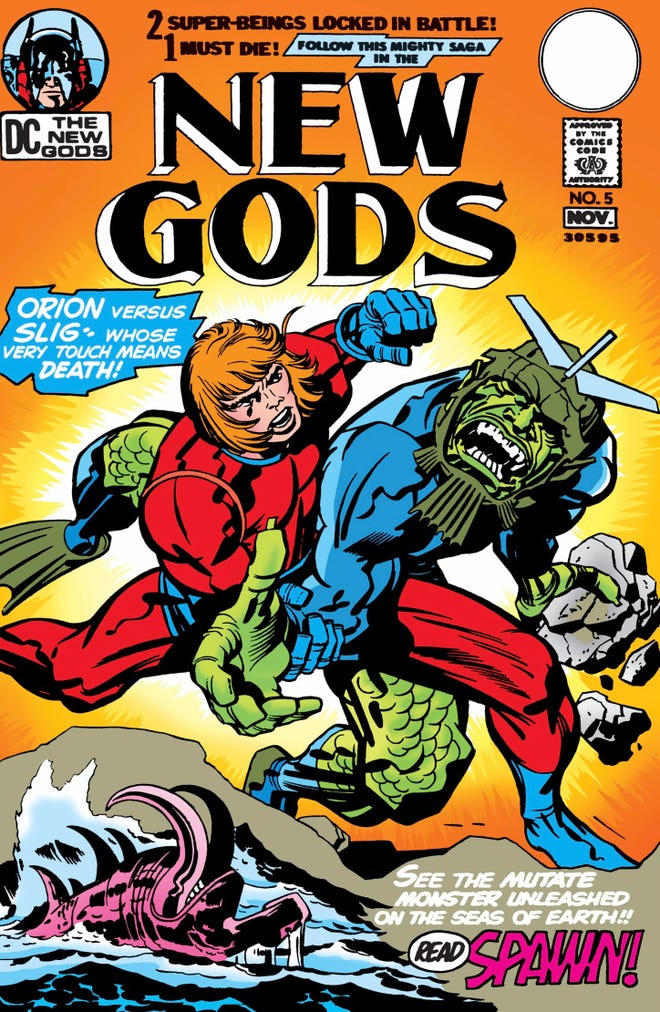
1. 'The Fourth World Saga' (New Gods #1-11, Mister Miracle #1-18, Forever People #1-11, Superman’s Pal Jimmy Olsen #133-150)
By Jack Kirby, Mike Royer, and Vince Colletta
There’s an argument to be made that Kirby’s original Fourth World Saga – as opposed to anyone’s attempts to revive it, including Kirby himself with the after-the-fact graphic novel The Hunger Dogs – is one of the primary achievements of the American comic book industry: a mammoth tale intended to build a new mythology of the 20th century, told across no less than four separate but interlinked comic book series, each one offering a different perspective on the same core conflict between two alien planets representing different approaches to life – the optimistic New Genesis and the fascistic Apokolips – is enough in itself. Kirby offers more, though, filling the tale with some of the greatest characters in the DCU, including Darkseid, Orion, Mister Miracle, and Big Barda. Even unfinished, the Fourth World Saga offers a glimpse at a new approach to superhero comic storytelling that other comic creators and moviemakers are still just catching up with today.
If you're interested in reader where DC Comics are going now, read our article on this summer's DC event-- Dark Crisis!








